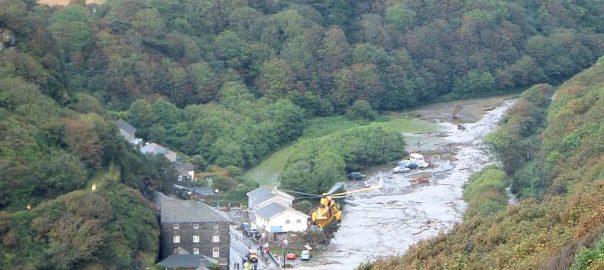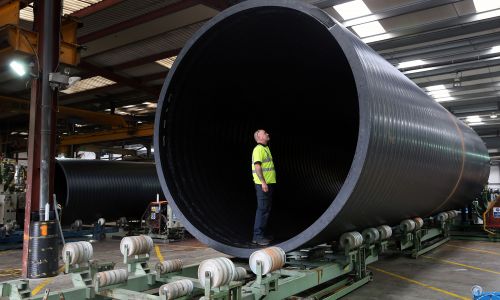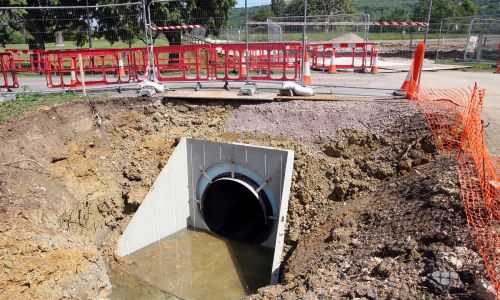15th November 2017
Winter is coming... but are we prepared for a deluge?
“Britain is heading for ‘unprecedented’ winter rainfall after the Met Office’s new super computer predicted records will be broken by up to 30 per cent” – Telegraph, July 24
“Britain’s winter weather 2017 is set to be the harshest for years thanks to a freak phenomenon in the world’s biggest ocean” – Express, October 20
“England could see record-breaking rainfall every winter for the next decade, the Met Office’s new super computer has predicted” – Evening Standard, July 25
When it comes to the UK weather, if you pay attention to the media, the end is most certainly nigh. Since July we have been treated to almost weekly headlines full of doom and gloom, grimly predicting ‘record rainfall’, ‘extreme flooding’ and biblical sounding ‘weather bombs’. Clickbait or not, sadly for us, many of the headlines are actually (somewhat) grounded in science.
We’re probably all familiar with El Nino, the central Pacific weather phenomenon that seemed to be the phrase on everyone’s lips a decade or so ago. The name given to one of the biggest fluctuations in the Earth’s climate system, El Nino has had major climatic consequences across the globe. On the other hand, most of us are probably less familiar with El Nino’s equally troublesome sister, La Nina, which scientists agree is likely to have a devastating effect on global weather patterns this winter.
And in the case of the UK, La Nina is likely to bring colder weather and heavier rains than normal in our direction.
But are we prepared for the deluge?
The answer to that question can probably be guessed at by looking back just two years ago. The winter of 2015 has been described as the worst on record in the UK, with the country experiencing numerous extreme flooding events, resulting in many communities being destroyed and the clean-up operation running into the billions.
Since then some efforts have been made to improve the country’s ability to cope with periods of extreme rainfall to avoid incidents of mass flooding, but in reality, the amount of large scale anti-flooding engineering work that needs to be undertaken to achieve any serious results has yet to be given the green light, despite large amounts of funding being allocated. And, in some areas where work has actually begun, it has yet to be completed due to the scale of the projects involved.
So what exactly is the Government doing to prevent a repeat of the winter of 2015, particularly in light of the arrival of La Nina? The current Environment Agency programme, which runs from 2015/16 to 2020/21, includes 1,136 flood and coastal erosion projects, with a projected price tag of just over £6bn.
60% of the total funding is being directed to London and the South East, with much of that total allocated to Greenwich and Woolwich in London. There are 11 projects totalling almost a billion pounds lined up for the constituency over the coming years. This sounds like a lot until you realise that the constituency is home to the Thames Barrier, the row of 10 huge moveable steel gates that span the Thames, protecting 125 square kilometres of central London, and countless billions in property, from tidal surges.
Dartford is another London constituency on the Thames that has four projects allocated to it totalling just over £800m.
Between Greenwich, Woolwich and Dartford, the constituencies account for around 40% of all the flood defence and coastal erosion government spending currently outlined for England. This is much to the chagrin of many counties in the north of England who have always felt hard done by from the Westminster government in the south, and who, following the devastating floods of winter 2015 now have a real axe to grind.
However, that’s not to say that the north is going without. In total 409 projects are scheduled for the north east, north west, Yorkshire and Humber, totalling £897.9m.
Across the UK a real mix of anti-flooding measures are being implemented to try and stem the inevitable flood waters from nature led solutions like SUDS, to more tried and tested options like refurbishing or replacing floodwalls and embankments, smaller barriers and pumping stations. However, it’s the newer, more advanced engineered solutions that the Government is really pinning its hopes (and budgets on).
In particular, there is currently a lot of talk about replacing the Thames Barrier. It’s said that within the next few decades it will come to the end of its durable lifetime and due to the bureaucracy and costs involved in this scale of project (it would cost tens of billions), many on the inner circle have started to think about planning its replacement now. The current favoured site is downstream near the M25 Dartford crossings.
Obviously all of these projects are excellent news and will inevitably go some way to address our wet little island’s flooding problems, but what about the here and now? And how are we likely to fare against La Nina’s impending mischief?
While progress has been made in the last two years, there’s still a long way to go to protect our flood prone plains and so it’s very much in the hands of the Gods as to how the UK copes this winter. We can only hope that Mother Nature is kind to us and that our nationwide flood defence systems endure, while crossing our fingers that the promised billions in anti-flood measures materialise are sooner rather than later.
Simon Thomas, is the Managing Director of Asset International, a manufacturing firm based in South Wales that produces Weholite large diameter HDPE pipes which are used in water management projects across the UK and internationally. Asset International supplies bespoke designs to the water and construction industries from surface drainage to foul sewers and inter-process pipework www.weholite.co.uk.
Your Name (required)
Your Email (required)
Your Telephone No. (required)
Subject
Your Message
Please verify you are human



